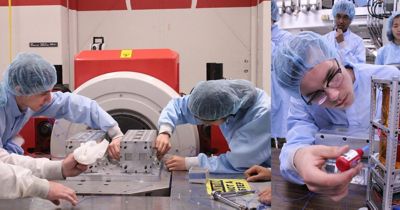-
United States -
United Kingdom -
India -
France -
Deutschland -
Italia -
日本 -
대한민국 -
中国 -
台灣
-
Ansys is committed to setting today's students up for success, by providing free simulation engineering software to students.
-
Ansys is committed to setting today's students up for success, by providing free simulation engineering software to students.
-
Ansys is committed to setting today's students up for success, by providing free simulation engineering software to students.
-
Contact Us -
Careers -
Students and Academic -
For United States and Canada
+1 844.462.6797

A large, bustling city surrounds you — crowded streets and tall buildings reaching toward the sky. You’re late for an appointment. However, instead of hopping into a car, you look above for your ride: an electric vertical takeoff and landing (eVTOL) vehicle. It is a small aircraft that takes off and lands vertically like helicopters, uses sustainable electric propulsion systems, and is intended to travel short-to-medium distances.
While this scenario is not yet a reality, the U.S. Federal Aviation Administration (FAA) is preparing for it to happen by 2028. As part of this, the FAA is working toward advanced air mobility (AAM), which the agency describes as “an emerging aviation ecosystem that leverages new aircraft and an array of innovative technologies to provide the opportunity for more efficient, more sustainable, and more equitable options for transportation.” When integrating AAM into the National Airspace System (NAS), the FAA’s top priority and statutory responsibility is to ensure the traveling public’s safety. This safe operation must be ensured throughout the many companies operating in this space.
One of these companies is Alaka’i Technologies, which has a mission to change the world by revolutionizing the transportation industry. To achieve this, the company isn’t just developing an eVTOL aircraft. Alaka’i is developing Skai, an eVTOL aircraft that uses hydrogen fuel cells to generate the electricity that powers its motors.

Skai hovering above the ground
“We are unusual in that we are the only ones using hydrogen fuel cells as a power source,” says Hugh Kelly, head of marketing at Alaka’i. Thanks to the many benefits of hydrogen fuel cells, the Alaka’i team views hydrogen as the ideal energy for air mobility.
Let’s take a closer look at why this work is important, the benefits of hydrogen, and how simulation is helping the team create a more sustainable future.
The Role of eVTOLs and Hydrogen Fuel Cells in Air Mobility
As populations grow and cities expand, our need to transport people and products increases as well. In coming years, this may significantly strain existing infrastructure. For example, 500 million megacity residents are expected to experience traffic problems by 2030. That’s where urban air mobility (UAM) comes in.
UAM involves implementing a safe, efficient transportation system that enables us to keep up with these demands. New technologies like eVTOLs play an important role in UAM, filling in the gaps in aviation services, from short-range air taxis to short-haul intercity routes. As for broader AAM goals, eVTOLs can help by, for example, aiding humanitarian groups and supporting search and rescue missions
Beyond having a wide range of potential applications, eVTOLs are beneficial from an environmental standpoint because they use electric power. For the Alaka’i team, this electric power is generated by hydrogen fuel cells. The company says this unique design choice has many benefits, including:
- Near-zero CO2 emissions when the hydrogen fuel is produced using renewable energy sources. In its operations, Alaka’i is already using green hydrogen, which is produced via electrolysis. This is an electrochemical process that extracts hydrogen from water by using renewable electricity.
- Increased efficiency. When compared with more conventional combustion engines, fuel cells can be more efficient, potentially converting the fuel’s chemical energy into electrical energy at above 60% efficiency.

A contour plot analyzing the mass fraction of h2
As a result of its design choices, the Alaka’i team aims to revolutionize the transportation industry and have Skai become the most convenient, cleanest, and safest way to move from point A to B. But first, the team needs to optimize its design and ensure that it’s fully functional. That’s where simulation comes in.
Developing a Hydrogen-powered eVTOL Aircraft
To bring Skai to life, Alaka’i partnered with the SimuTech Group, an Ansys Apex Channel Partner, and took part in the Ansys Startup Program. As an Ansys Startup Program member, Alaka’i gained affordable access to simulation and the support and training that the company needed to conquer the challenges that it faced when developing Skai. One of these challenges involved keeping the hydrogen fuel cells cool.
The core of this problem is straightforward: Hydrogen fuel cells generate heat and thus need an appropriate cooling system. But solving this is not as easy as it sounds. When compared with internal combustion engines and jet engines, fuel cells “operate at a lower temperature while still generating a lot of heat,” says Behrouz Karami, simulation expert and computational fluid dynamics (CFD) engineer at Alaka’i. This poses a challenge for cooling because there can be a small temperature difference between the fuel cell’s hot surface and, for instance, a summertime environment. This smaller temperature difference makes heat transfer more challenging.
To address this challenge, the team turned to Ansys Fluent fluid simulation software and its polymer electrolyte membrane (PEM) fuel cell model to study a variety of scenarios that the fuel cell might experience — all from “the controlled temperature environment of our office,” Karami quips. To accurately analyze the cooling system for Skai’s hydrogen fuel cell, these simulations involved modeling a cooling system loop with pumps that move water through it, state-of-the-art radiators, filters that remove small particles, hoses, intercoolers, the cooling of the compressor, and the exact geometries of everything involved. “Ansys was the tool that had the breadth to cover all of that area in high fidelity,” says Finn Arcadi, head of engineering at Alaka’i.

A contour plot analyzing static pressure
The team also used Ansys Discovery 3D product simulation software in its work. “Ansys Discovery simulation software is very easy to set up, easy to learn, and suitable for engineering problems,” Karami says. Using Discovery software enables designers to easily run structural analyses, flow problems, and pressure drop early in the design phase. In this way, more team members can access the power of simulation.
Reflecting on the work up to this point, simulation “saves so much time in bringing a functioning product to life,” says Arcadi. Studying a 4,000-to-5,000-pound vehicle in a variety of scenarios with a low margin for error is essential, and the Alaka’i team turns to simulation to achieve this goal. Additionally, the team emphasizes how simulation reduces costs by minimizing the number of prototypes and crew hours needed to run a test, which makes products like Skai more competitive.
Looking Toward the Future of Urban Air Mobility
When the Alaka’i team envisions the future of Skai, it sees an eVTOL aircraft that will give a new level of freedom to individuals by providing an easy transportation option with an expected range of about 250 miles. Furthermore, the team is optimistic that the use of Skai will not only help with reducing pollution and traffic congestion but aid essential workers in important applications like disaster relief.
For its next steps in achieving these goals, the Alaka’i team hopes to expand the use of simulation to analyze areas like acoustics to keep Skai’s noise level low enough for populated areas and aerodynamics to further optimize the company’s design — both of which can be achieved with Ansys simulation software.
Interested in learning more about how simulation is helping researchers and engineers change the game in aerospace? Check out our aerospace industry overview. Also, learn more about how Ansys’ products aid the design of aircraft.
Just for you. We have some additional resources you may enjoy.
“Ansys Discovery simulation software is very easy to set up, easy to learn, and suitable for engineering problems.”
— Behrouz Karami, simulation expert and computational fluid dynamics engineer, Alaka’i
The Advantage Blog
The Ansys Advantage blog, featuring contributions from Ansys and other technology experts, keeps you updated on how Ansys simulation is powering innovation that drives human advancement.














